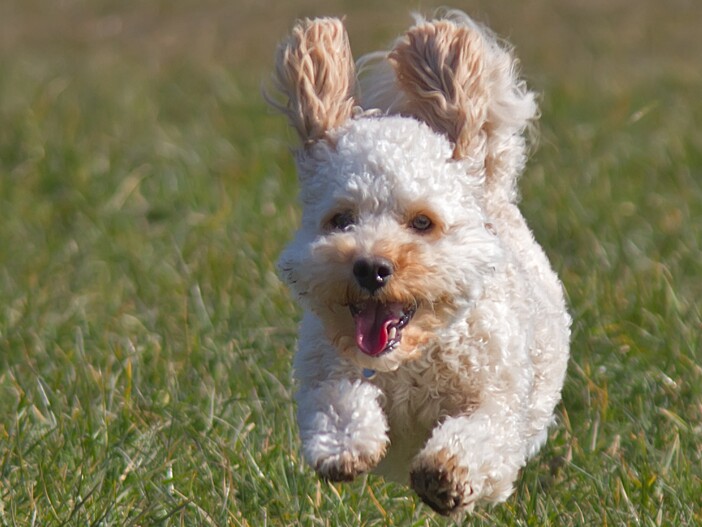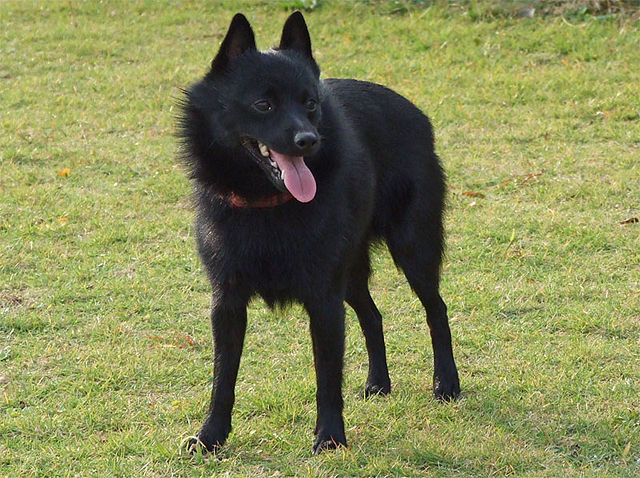Maltipoo vs Cavapoo: Which Designer Dog Is Right for Your Family?
If you’re considering adding a furry friend to your family and have narrowed your search to designer dogs, you might be weighing the differences between a Maltipoo and a Cavapoo. These popular crossbreeds have captured the hearts of dog lovers worldwide, and for good reason.
Both breeds combine the intelligence of the Poodle with unique characteristics from their other parent breeds, creating companions that are both charming and adaptable. In this comprehensive guide, we’ll explore everything you need to know about these lovable companions, including how they compare to other popular breeds like the Bichon Frise.
Origins: Understanding Their Designer Dog Heritage
Both Maltipoos and Cavapoos are part of the growing designer dog trend, but their origins tell different stories.
The Maltipoo is a cross between a Maltese and a Miniature or Toy Poodle, combining the Maltese’s affectionate nature with the Poodle’s intelligence and low-shedding coat.

The Cavapoo (also known as Cavoodle) results from breeding a Cavalier King Charles Spaniel with a Poodle, inheriting the Cavalier’s gentle temperament and the Poodle’s trainability.

When comparing maltipoo vs bichon vs cavapoo options, it’s worth noting that unlike the Bichon Frise, neither Maltipoos nor Cavapoos are recognized as official breeds by major kennel clubs like the American Kennel Club (AKC) or Fédération Cynologique Internationale (FCI).
This lack of official recognition doesn’t diminish their popularity or quality as companions, but it does mean there’s more variability in their characteristics compared to established breeds.
The first documented Maltipoo breedings occurred in the United States during the 1990s, while Cavapoos were first developed in Australia in the late 1990s. Both breeds were created with the goal of developing smaller, allergy-friendly dogs with excellent temperaments for family living.
Physical Characteristics: Size and Weight Comparison
When evaluating a Cavapoo vs Maltipoo, size can be a deciding factor.
Maltipoos typically stand between 8-14 inches at the shoulder and weigh between 5-20 pounds, with their size varying depending on whether a Toy or Miniature Poodle parent was used.
Their coat textures range from slightly wavy to tightly curled, and they come in a variety of colors including white, cream, and silver. Their face shape typically reflects both Maltese and Poodle features, while their body structure remains lean and well-proportioned.
Cavapoos tend to be slightly larger, standing 9-14 inches at the shoulder and weighing between 9-25 pounds. Their larger size comes from their Cavalier parent, giving them a more robust frame compared to Maltipoos.
Their coats can be straight, wavy, or curly, and they come in an array of colors including ruby, black, white, cream, and chocolate. Their facial features often blend the Cavalier’s soft expression with Poodle characteristics.
Investment Considerations: Puppy Prices in the USA
Designer dogs come with designer price tags, and both breeds represent a significant investment.
Maltipoos typically range from $2,000 to $4,000, with show quality or rare colors commanding higher prices. The cost often increases for puppies from health-tested parents, and prices tend to be higher in urban areas.
Beyond the initial purchase price, owners should expect additional costs for initial veterinary care ranging from $200-500, plus regular grooming sessions costing $50-100 each.
Cavapoos generally command slightly higher prices, ranging from $2,500 to $4,500. Premium pricing applies to puppies from champion bloodlines, and comprehensive health testing and genetic screening can further increase costs. Geographic location significantly impacts pricing, with urban areas typically commanding higher prices. Initial supplies and medical care can add $300-600 to the initial investment, while regular grooming sessions typically cost $60-120.

Intelligence and Trainability
Both breeds inherit the Poodle’s remarkable intelligence, though they express it in different ways.
Maltipoos are notably quick learners, displaying an impressive aptitude for trick training and agility exercises. Their problem-solving abilities often surprise their owners, and they excel particularly well in short, focused training sessions.
However, their Maltese heritage can sometimes manifest as a stubborn streak, requiring extra patience during training. Housebreaking typically takes 4-6 months, and leash training may require consistent effort to overcome their occasional willful nature.
Cavapoos, on the other hand, showcase their intelligence through their exceptional emotional awareness and eager-to-please attitude. Their learning style tends to be more consistent and methodical, making them excellent candidates for obedience training.
They demonstrate strong recall abilities and naturally adapt well to routine. Recent studies in canine cognition from 2023 highlight how designer breeds like these often benefit from hybrid vigor, showing enhanced problem-solving abilities and adaptability compared to their parent breeds.

Temperament and Personality Traits
The personality differences between these breeds can significantly impact their fit within a family.
Maltipoos are known for their vibrant, energetic nature that persists throughout the day. They form incredibly strong bonds with family members and often act as natural watchdogs, staying alert to their surroundings.
Their social butterfly tendencies make them excellent companions, though this can sometimes manifest as attention-seeking behavior. Some Maltipoos may develop resource guarding behaviors or show signs of separation anxiety if not properly trained from an early age.
Cavapoos typically display a more measured temperament, characterized by their gentle disposition and remarkably calm demeanor, especially indoors. Their patient nature makes them exceptional family dogs, and they demonstrate impressive impulse control.
Many Cavapoos naturally gravitate toward therapy work due to their even-tempered responses and intuitive understanding of human emotions. While generally confident, they may show occasional timidity if not well-socialized, and they can be sensitive to harsh corrections or very loud environments.
Affection and Family Compatibility
The way these breeds express affection differs notably.
Maltipoos often develop intense bonds with their primary caregiver, showing their affection through constant physical proximity and enthusiastic greetings.
They’re known for their shadow-like tendency to follow their favorite person around the house, seeking regular physical contact and lap time. Their protective instincts often manifest through loving yet occasionally possessive behaviors.
Cavapoos approach affection with a more balanced disposition, typically spreading their love equally among family members. Their gentle nuzzling and calm presence make them excellent emotional support animals.
They demonstrate an intuitive ability to respond to their family’s emotional needs, often positioning themselves near family activities without demanding constant attention. This makes them particularly well-suited for households with multiple family members who all want to share in the dog’s affection.
Living with Children
The interaction between these breeds and children requires careful consideration.
Cavapoos generally excel with children of all ages, thanks to their patient nature and sturdier build. Their higher pain tolerance and calmer play style make them naturally suited to families with young children.
They demonstrate excellent bite inhibition and maintain predictable behavior patterns, making them safe and reliable companions for children of all ages, from toddlers to teenagers.
Maltipoos, while equally loving, require more careful management around children. Their smaller size makes them more vulnerable to unintentional rough handling, making them better suited for families with older children who can understand and respect their delicate nature.
They do wonderfully with teenagers and gentle, older children who can match their energy levels appropriately. Families with younger children should provide careful supervision and training to both the dog and the child to ensure safe interactions.
Vocal Tendencies and Communication
The vocal patterns of these breeds can significantly impact their suitability for different living situations.
Maltipoos tend to be more vocally expressive, inheriting the Maltese’s watchdog tendencies. Their barking serves various purposes, from alerting their family to unfamiliar sounds to expressing excitement during play.
This vocal nature requires early training and consistent management to prevent excessive barking from becoming a habit. Successful management includes early socialization to different sounds, consistent training from puppyhood, and regular mental stimulation to prevent boredom-induced barking.
Cavapoos typically demonstrate more reserved vocal tendencies, showing greater discretion in their barking habits. Their vocalizations tend to be lower in pitch and shorter in duration, making them more suitable for apartment living or noise-sensitive environments.
They respond well to quiet commands and generally bark only when necessary, making them easier to manage in terms of noise control.
Apartment Living Suitability
Both breeds can thrive in apartment settings, though they adjust differently to confined spaces.
Maltipoos adapt well to apartment living provided they receive adequate exercise and mental stimulation. Their small size works to their advantage, but their energy levels require creative solutions in limited spaces.
Success in apartment living with a Maltipoo depends heavily on establishing designated play areas, maintaining consistent exercise routines, and implementing effective noise management strategies. Creating a structured schedule for bathroom breaks and exercise becomes crucial in an apartment setting.
Cavapoos often prove to be natural apartment dwellers, thanks to their calmer disposition and adaptive nature. Their quieter temperament makes them excellent neighbors, and they demonstrate a remarkable ability to settle into small spaces comfortably.
They require less intensive management in terms of exercise and activity levels compared to Maltipoos, though they still need regular outdoor excursions. Their superior ability to self-settle and maintain calm indoor behavior makes them particularly well-suited to apartment living.
Independence and Alone Time
Managing time alone presents distinct challenges for both breeds.
Maltipoos typically struggle more with separation, showing a higher propensity for separation anxiety and dependent behaviors. When left alone, they may exhibit signs of distress through excessive barking or destructive behavior.
Successfully managing a Maltipoo’s alone time requires gradual training from an early age, potentially incorporating professional dog walking services, and providing engaging, interactive dog toys. Many owners find that setting up monitoring systems and maintaining strict routines helps ease their pet’s anxiety.
Cavapoos generally demonstrate better independence, though they still prefer regular human interaction. Their calmer nature allows them to self-soothe more effectively when alone, and they typically show fewer destructive tendencies during separation.
Professional trainers recommend limiting alone time to 4-6 hours maximum for both breeds, with Cavapoos often handling this duration more gracefully. Establishing clear departure routines and providing appropriate enrichment activities helps both breeds manage time alone more successfully.
Health Considerations and Life Expectancy
Understanding the health profiles of both breeds helps owners prepare for potential challenges throughout their pet’s life.
Maltipoos commonly face several health concerns, including White Shaker Syndrome, which typically appears between 6 months to 3 years of age. This condition, while concerning, responds well to medication when caught early.
Progressive Retinal Atrophy represents another significant concern, requiring regular eye examinations for early detection. Patellar luxation often affects these small dogs, sometimes necessitating surgical intervention or physical therapy. Dental problems also require vigilant attention through regular professional cleaning and daily home care.
Cavapoos face their own set of health challenges, with Mitral Valve Disease being a primary concern inherited from their Cavalier parentage. Regular cardiac monitoring becomes essential as these dogs age. Syringomyelia, while less common, requires attention through MRI screening and genetic testing.
Hip dysplasia can affect these slightly larger dogs, making weight management and appropriate exercise crucial for long-term joint health. Both breeds benefit significantly from regular veterinary care and early intervention for any health issues.
Life Expectancy and Quality of Life
Maltipoos typically enjoy a lifespan of 10-13 years, while Cavapoos often live slightly longer, averaging 12-15 years. These lifespans depend heavily on various factors, including diet quality, exercise consistency, and access to regular veterinary care.
Environmental conditions and stress levels also play crucial roles in determining longevity. Preventative care, including regular check-ups and maintaining appropriate weight, significantly impacts both breeds’ quality of life through their senior years.
Expert Insights and Current Research
Recent scientific studies have shed new light on designer breeds like Maltipoos and Cavapoos. Research conducted in 2023 demonstrates significant benefits from hybrid vigor, including improved genetic diversity and enhanced disease resistance.
Veterinary behavior studies highlight these breeds’ exceptional social cognition abilities and emotional intelligence, particularly in family settings. Ongoing research continues to explore their adaptation capabilities and stress response patterns, providing valuable insights for breeding programs and owner education.
Making Your Final Decision: Maltipoo vs Cavapoo
Choosing between a Maltipoo and Cavapoo ultimately depends on aligning your lifestyle with each breed’s characteristics. Consider your daily schedule, living space, family composition, and activity level when making this important decision. Financial commitment plays a crucial role, as both breeds require significant investment in their care, from regular grooming to potential health management.
For families seeking an energetic, highly affectionate companion who thrives on constant interaction, a Maltipoo might be the perfect choice.
Their vivacious personality and devoted nature make them excellent companions for those who can provide consistent attention and engagement. However, potential owners should be prepared for more intensive training needs and possible separation anxiety management.
Cavapoos often suit families looking for a more laid-back, adaptable pet with a gentle temperament. Their patient nature and even disposition make them excellent choices for households with children or multiple pets.
While they require less intensive management in terms of exercise and training, they still need dedicated care and attention to thrive.
Remember that individual dogs within each breed can vary significantly in personality and needs. Meeting potential puppies and their parents before making a decision provides valuable insight into temperament and care requirements. Working with reputable breeders who prioritize health testing and proper socialization ensures the best possible start for your new family member, whether you choose a Maltipoo or Cavapoo.
Professional breeders recommend spending time with both breeds if possible before making a final decision. This hands-on experience often proves invaluable in determining which breed better suits your family’s dynamics and lifestyle. Regardless of your choice, both breeds offer the potential for wonderful, loving companionship when matched with the right family environment and care commitment.





